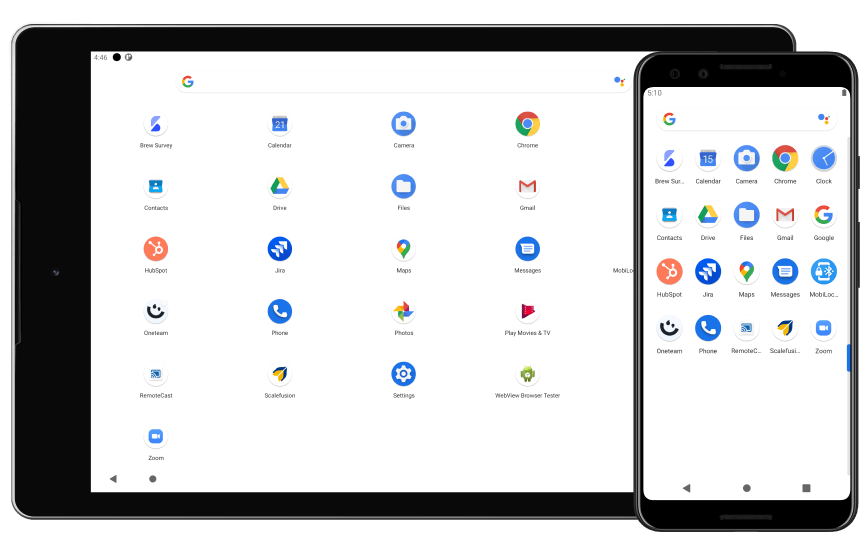App
Android Kiosk Mode and How It’s Used in the Enterprise

Table of Contents
Overview
Kiosk mode is for devices that are only used once or have a very limited scope of use. Fully managed devices in kiosk mode also known as dedicated device mode are locked to a single app or collection of apps. This management mode’s user experience is particularly concentrated. Only the tasks that are enabled by the allow list apps are available to the user. Retail devices, self-check-in stations, restaurant self-service kiosks, and other gadgets frequently use kiosk mode.
Android kiosk mode in an enterprise
By setting up an Android device as a dedicated device, one may transform it into a Kiosk. Because these devices may be left unattended and/or used for vital functions, they must be adequately managed to avoid misuse. Any corporation would own fully managed gadgets, which are solely used for work. Android Kiosk devices are deployed in the field in two ways:
Employee facing
Android includes a set of APIs that enable IT administrators to restrict enterprise devices to full-screen programs, preventing the user from dismissing or switching to another app. After a shift, these devices are usually shared between users, and dedicated device regulations do not distinguish between personal and professional profiles. Employees who use a dedicated Android Kiosk device with a set of applications include retail store associates, warehouse workers, field technicians, and delivery drivers.
Customer-facing
A conventional Kiosk is often an Android smartphone that is dedicated to serving customers. The Android APIs allow a device to pin an application in full-screen mode and provide IT, admins, with lockdown options, such as:
- Single application in a full-screen mode
- Setting paths are blocked
- The status bar is disabled.
- Home and Recent App buttons are hidden.
- Getting rid of incoming calls
- A device that is always on
- Automatic over-the-air (OTA) updates are disabled.
Locking down the device is critical because it is left unattended and utilized by an inexperienced user population. Without access to Android’s lockdown APIs, the device might be rendered inoperable or exploited for malicious purposes.
Also, Check – The Best Language Apps To Learn For Kids
Device requirements to set up android enterprise
To be handled as an Android Enterprise dedicated device, devices must meet the following requirements:
- Versions of Android OS 6.0 and higher are supported.
- Devices must run an Android distribution that supports Google Mobile Services (GMS). GMS must be installed on the devices, and they must be able to connect to GMS.
Conclusion
Android Enterprise administration allows creating single-use scenarios to help lockdown of devices. Administrators can use this configuration to limit these devices to one or multiple apps, allowing just a limited range of features to be used. This connection will also let managers impose security limits, such as barring users from accessing other areas of the device or utilizing extra programs.
Reference links
- https://docs.microsoft.com/en-us/mem/intune/enrollment/android-kiosk-enroll
- https://www.ibm.com/support/pages/how-setup-android-enterprise-cosu-kiosk-mode
- https://www.manageengine.com/mobile-device-management/enterprise-mobility-management-emm.html
- https://bluefletch.com/android-kiosk-mode-and-how-its-used-in-the-enterprise/

-

 Business3 years ago
Business3 years agoHow to Do Long-Distance Moves with Children
-

 Travel2 years ago
Travel2 years agoQuick Guide: Moving To Santa Rosa?
-

 Real Estate3 years ago
Real Estate3 years agoWhy Dubai Festival City is a Great Neighbourhood for Young Learners
-

 Business3 years ago
Business3 years agoIs Guest Posting a Good Inbound Marketing Strategy?
-

 Business1 year ago
Business1 year agoThe Ultimate Guide To Thriving In Your Printing Franchise
-

 Business1 year ago
Business1 year agoExploring The Benefits And Challenges Of Restaurant Franchising
-

 Tech3 years ago
Tech3 years agoCyber Table That Will Change Your Life
-

 Lifestyle1 year ago
Lifestyle1 year agoDallas’ Hidden Gems: 6 Must-Try Restaurants Off The Beaten Path!









Recent Comments